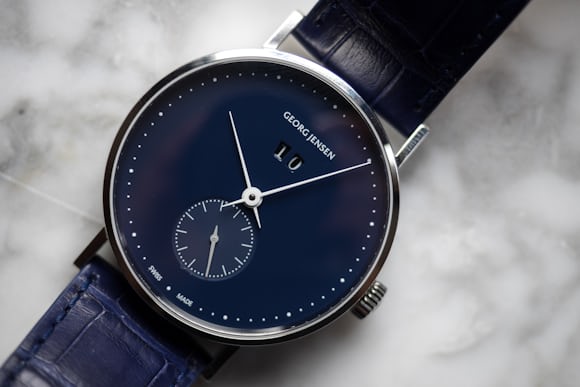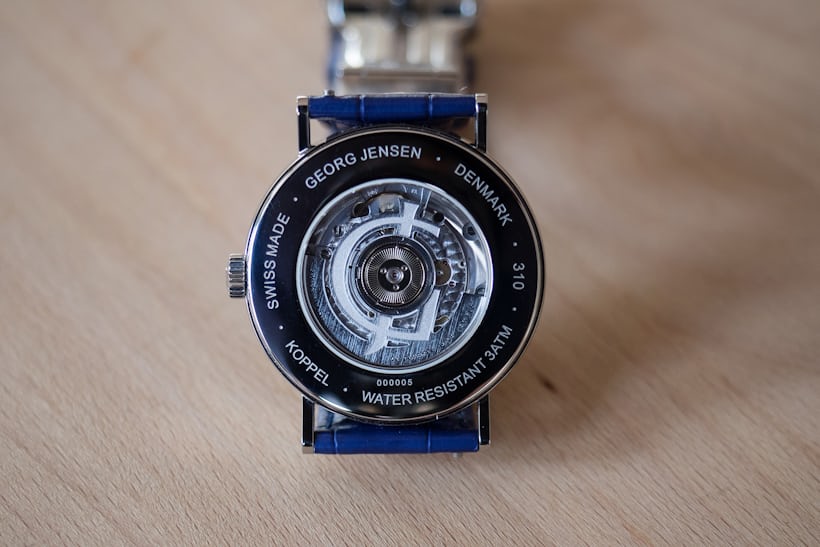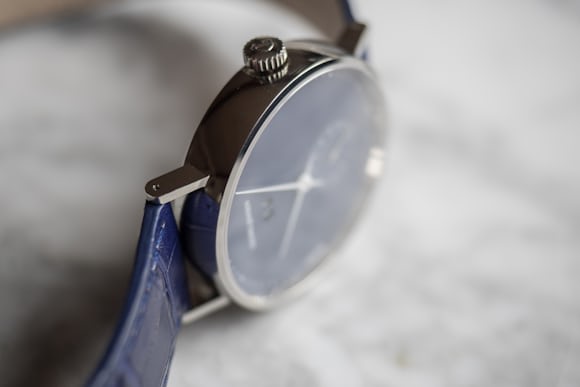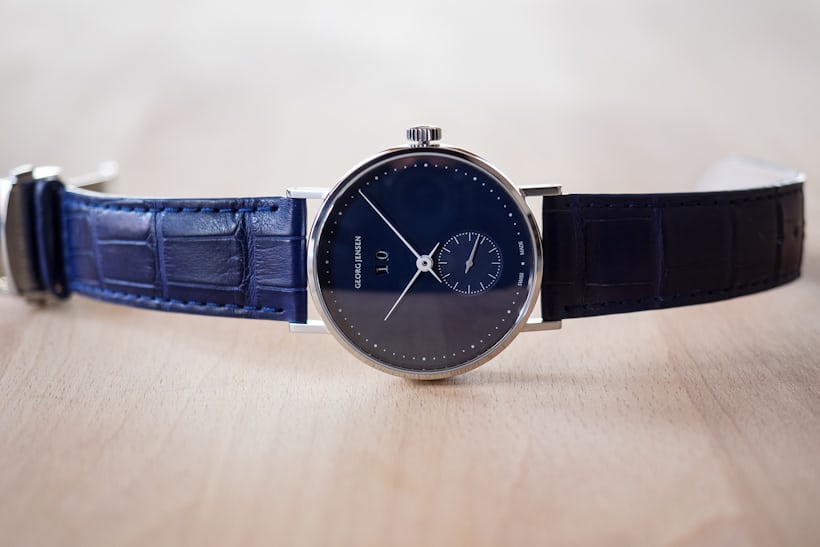Georg Jensen is best known for its silverware and flatware, and rightly so; the company takes its name from its founder, a Danish silversmith who established the firm in 1909, with a store in Berlin. In the following decades, and especially after the Second World War, the firm became known for its heavily Bauhaus-influenced design and for its contributions to the Danish Modern design movement. One of its best-known designers, after the death of Georg Jensen in 1935, was Henning Koppel, who was responsible for some of Georg Jensen's most iconic designs – including the company's first wristwatch, in 1978. The latest variation on Koppel's original design debuted at Baselworld this year, as the Koppel Grande Date Small Seconds.

Henning Koppel was one of the most influential designers to work at Georg Jensen; his work was heavily influenced by the simplicity and organic lines of such artists as Brancusi and that influence can easily be seen in such designs as his famous "pregnant duck" silver pitcher, from 1951.

The very first Koppel-designed watch from 1978 was characterized by a quite spare design, with long, thin hands, a deliberately uncluttered dial, and the use of dots at the five minute marks. The new Koppel Grande Date Small Seconds adheres to that basic design vocabulary, but with the addition of a big date module.

The Koppel Grande Date Small Seconds is 41 mm in diameter and 12.3 mm thick; I'd guess that at least some of the thickness is due to the use of a small seconds and big date module in the Dubois-Dépraz 14000, which offers a 42-hour power reserve (the position of the crown also indicates a modular construction). However, the major draw for this watch is obviously its design and design history rather than its technical features. The blue dial model you see here has quite a lot of personality for a minimalist wristwatch, thanks to the very thin hour and minute hands, and the dial remains, as Koppel would have wanted it, austerely unadorned (other than the Georg Jensen logo). Incidentally, although the strap is color matched to the dial, Georg Jensen seems to be okay with the idea of changing straps; the provided strap has quick-release springbars (tabs provided so no tool is necessary) and the lugs are drilled.


From a design standpoint this is very much a classic example of mid-century design, and it's interesting to see how well this design philosophy holds up. There's a very refined feeling overall thanks to the considerable restraint Georg Jensen has shown in re-interpreting Henning Koppel's original design with a large date display. The date's easy to read, and a useful addition to the watch (for those of us who like a calendar display) and it's a good example of a watch that manages to be versatile and keep its own distinctive character at the same time. The only slight issue with the overall sense of fineness is the relative thickness of the watch; I'd have preferred it a bit thinner. However, the use of a modular movement helps keep the price in an affordable segment, for folks who are interested in a design-forward mechanical watch with a big date display that won't break the bank. And the blue lacquer dial on the model we had in for review is pretty mesmerizing. Overall, a great look and an interesting additional option for anyone looking Modernist influenced wristwatch design in a mechanical timepiece.

The Georg Jensen Koppel Grande Date is offered in stainless steel with a blue or white dial, or in 18k rose gold. Movement, Dubois-Dépraz 14000 with small seconds and large date display. Case, 41 mm x 12.3 mm. Sapphire crystals front and back, on matching alligator strap with folding clasp; drilled lugs and quick release spring bars supplied. As shown, in stainless steel, $3,550. Available in October 2016.
No comments:
Post a Comment